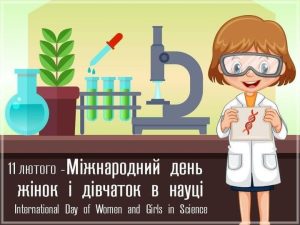Every year on February 11, the International Day of Women and Girls in Science is celebrated by the United Nations. On December 20, 2013, the UN General Assembly adopted the resolution “Science, Technology and Innovation for Development”, which recognized equal access of women and girls of all ages to the achievements and development of science, technology and innovation as a key to ensuring gender equality in this area. Two years later, at the regular plenary session of the General Assembly, a resolution (70/212) was adopted, proclaiming February 11 as the International Day of Women and Girls in Science.
It is worth noting that this was a new stage in the implementation of the 2030 Agenda for Society, known as the UN General Assembly Resolution “Transforming Our World: The 2030 Agenda for Sustainable Development”.
The main goal of the Resolution is to achieve qualitative changes in the process of involving women and girls in science. Recently, the global community has made significant progress in this area, but for some reason, women and girls still face limitations in this activity.
Studies conducted in 14 countries have shown a certain imbalance in participation in the scientific field between men and women. Thus, the possibility of obtaining a bachelor’s, master’s and doctoral degree for women in science is 18%, 8% and 2%, respectively, while for men these figures are 37%, 18% and 6%.
The resolution calls on countries around the world to pay attention to the problem, try to identify the causes of the gender imbalance in science, technology and innovation, and organize programs of activities to attract women and girls to scientific activities. It is noteworthy that the mention of not only women but also girls in the name of the holiday is not accidental. After all, it is aimed at actualizing the topic of participation in scientific communities during the school period of study not only for boys, but also for girls, whose participation in them is much lower. In addition, the participants of the events celebrating the new International Day draw attention to the work of educators and teachers in school and preschool education institutions, where the principles of gender equality should be taken into account.
According to the UNESCO Institute for Statistics, only 28% of scientists in the world are women, while in Ukraine 45% of scientists are women. Our country ranks 12th in terms of the number of women scientists in a ranking of 41 countries.
In 2018, the Ukrainian Prize was introduced as part of the global L’ORÉAL-UNESCO Program for Women in Science. It was created for young women who are professionally engaged in STEM (science, technology, engineering, mathematics) research and to encourage them to develop Ukrainian science.
Ukrainian women work successfully in various fields of science. Most women scientists are in the social sciences (65.8%), medical sciences (65.2%), and humanities (60.3%). In the field of technical sciences, there are only 34.1% of them.



